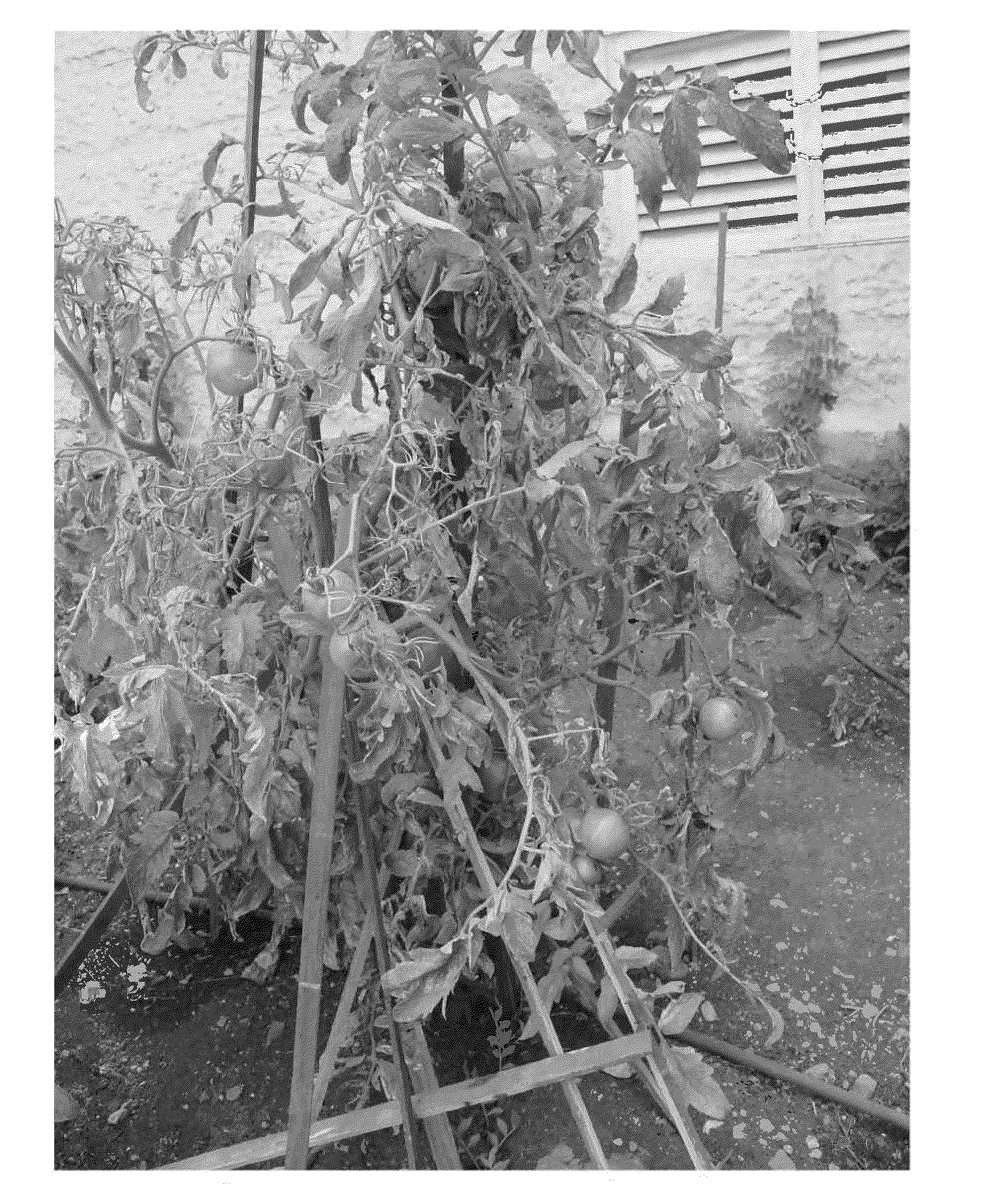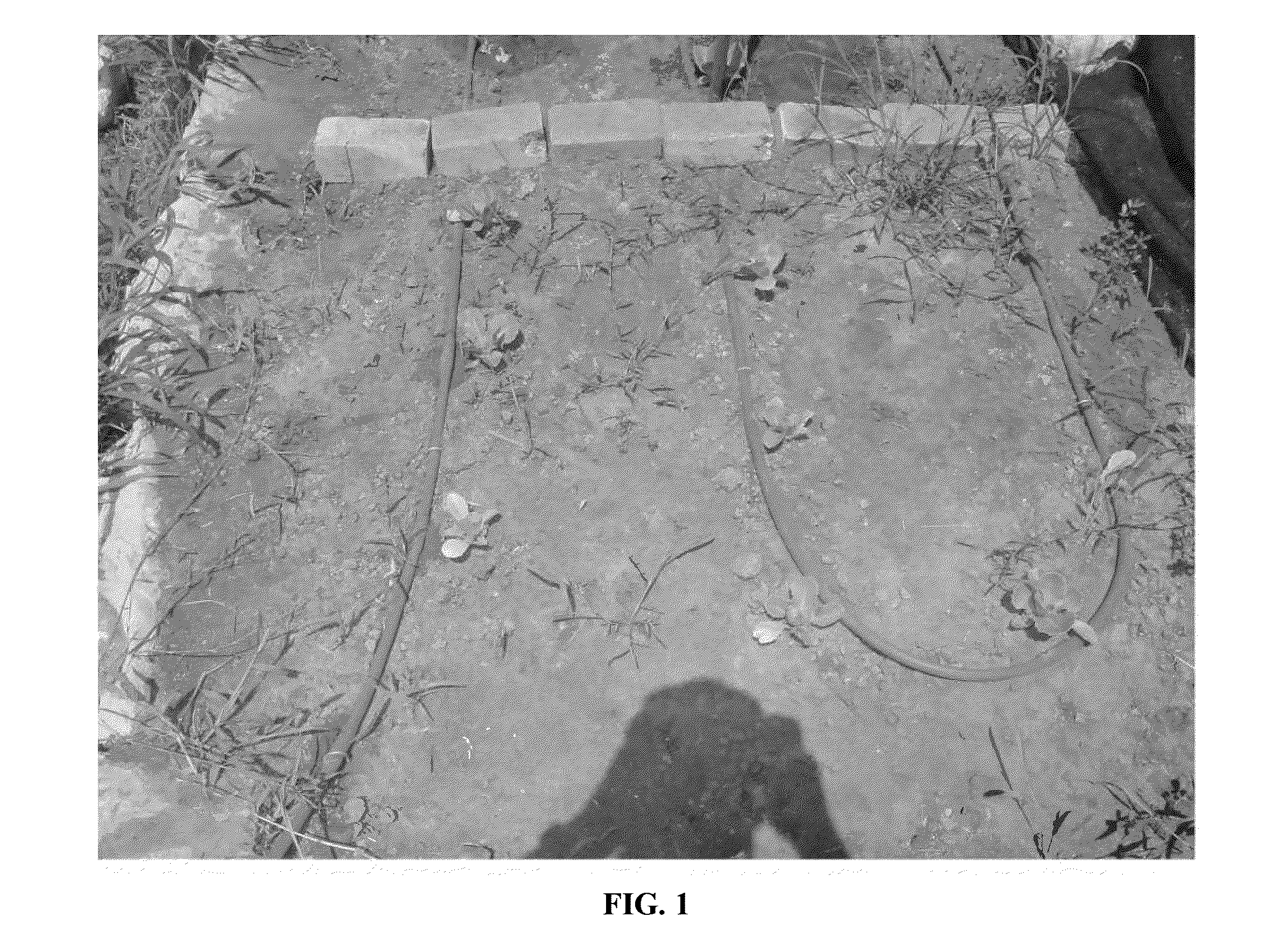Composition for Improving Plant Growth and Yield and Method for Using Same
a technology for plant growth and yield, applied in the direction of plant growth regulators, pest control, botany apparatus and processes, etc., can solve the problems of severe irritation or allergic reaction, and achieve the effect of increasing plant growth and crop yield
- Summary
- Abstract
- Description
- Claims
- Application Information
AI Technical Summary
Benefits of technology
Problems solved by technology
Method used
Image
Examples
example 1
n of Composition in Accordance With Embodiments of the Invention
[0022]Two drops of each of Bergamot, Neroli and Patchouli oils were added to 500 ml of water and 30 ml of sunflower oil. The essential oils were mixed in with the water and vegetable oil, with two drops of wheat germ oil added to preserve the composition. The result was a stock mixture of dilute a mixture of Bergamot, Neroli and Patchouli oils.
[0023]In use, the stock mixture may further diluted before application to plants. Thus, for example, 50 ml of stock mixture may be added to 8 to 10 liters of water, which may be used to water the plants as needed, which should be sufficient to water an area of approximately 18 square meters. It was found that was not necessary to re-mix the components of the stock mixture immediately prior to use.
example 2
[0024]This experiment was carried out in the summer in Jerusalem, Israel. Twenty seedling of iceberg lettuce (Lactuca sateva L.) were planted in each of three lots which were located in close proximity to one another. The plants in each lot were spaced 30 cm apart. In Lots 1 and 3, the soil was untreated; in Lot 2, compost was added. All three lots were watered as necessary in accordance with local weather conditions to ensure that all plants received sufficient water. Once a week, in addition to watering with untreated water, the plants in Lot no. 3 were treated with 10 liters water to which 50 ml of the composition of Example 1 had been added. The results of the experiment are set forth in the table below.
Average Height of PlantsDateLot 1Lot 2Lot 3June 810 cm10 cm10 cmJuly 815 cm22 cm25 cm
[0025]The number of plants that survived were: Lot 1-15; Lot 2-16; Lot 3-19. The dead plants were all infected with the fungus Fusarium oxysporum, which is common in the area where the experiment...
example 3
[0028]In March of the first year of the experiment, seeds of sage (salvia officinalis), lemon balm (Melissa officinalis) and common thyme (thymus vulgaris) were planted on a small plot of land in Jerusalem, Israel. There was a very thin layer of soil consisting mainly of clay and pebbles on bedrock. No fertilizers were added. In two to three weeks the seeds sprouted, but in spite of the fact that they received plenty of water and grew throughout the entire year, the plants reached not more than 8 to 10 cm in height.
[0029]The following March, these same plants were watered with solution of prepared in accordance with Example 1. Three weeks later the sage grew into a bush of 30 to 40 cm in height. By the end of the summer the height of the sage was 55 cm, lemon balm was 60 cm and common thyme was 62 cm high.
PUM
 Login to View More
Login to View More Abstract
Description
Claims
Application Information
 Login to View More
Login to View More - R&D
- Intellectual Property
- Life Sciences
- Materials
- Tech Scout
- Unparalleled Data Quality
- Higher Quality Content
- 60% Fewer Hallucinations
Browse by: Latest US Patents, China's latest patents, Technical Efficacy Thesaurus, Application Domain, Technology Topic, Popular Technical Reports.
© 2025 PatSnap. All rights reserved.Legal|Privacy policy|Modern Slavery Act Transparency Statement|Sitemap|About US| Contact US: help@patsnap.com



